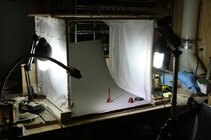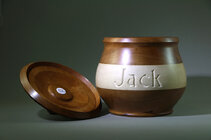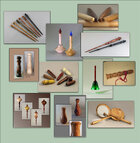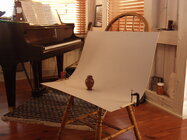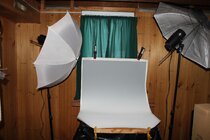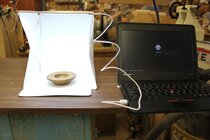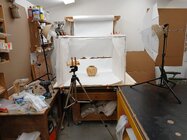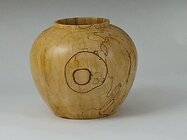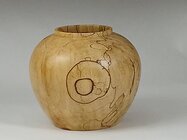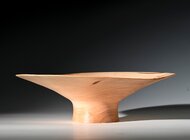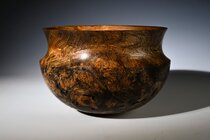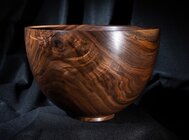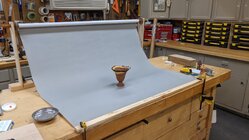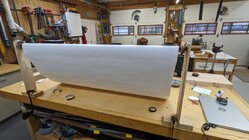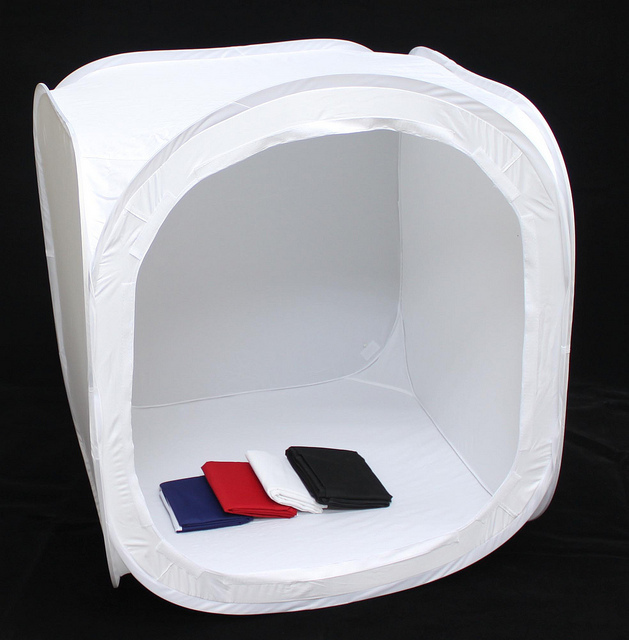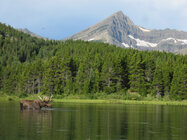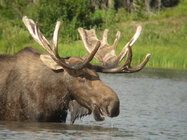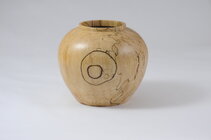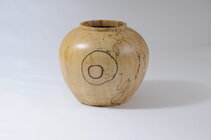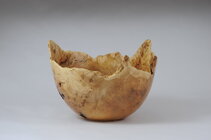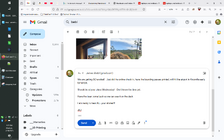I need a simple, effective system for documenting my work. Like most people I don't have room for a permanent setup but this is what I have cobbled together so far. The first pic shows the finishing corner behind a cnc router with a cover sheet on the bed which I use for an assembly bench. The second shows the cover sheet slid over and supported by the router and a couple of bench/carts with a white backdrop slung from a pole suspended in front of the exhaust fan, The lighting consists of a single 5500K compact flourescent with about 3400 lumens behind a white parasol for diffusion and a couple of white bounce panels. The windows are covered so 95% of the ambient light is shut out and whatever daylight makes it in should not conflict with the photo bulb. The front of the table is about 9' from the back wall, allowing the backdrop to drape gradually. I have a DSLR camera with a 70-210 zoom lens which allows me to set it up far enough back to have some room to maneuver.
The third photo is a test shot with 105mm focal distance, auto white balance and f18 aperture. The color seems right, but I may compare it with a custom white balance and a designated color temp just for grins. The image of the vessel itself seems fairly clean. I see some wrinkles and schmutz in the flat backdrop, more shadow than I might like and a hot spot on the vessel shoulder. I could get the vertical background darker with a shade panel between it and the light. I'm sure the wrinkles could be rubbed out with editing software. I have another lightstand so could easily add another light if advisable or another diffusion panel.
What do your eyes see that mine don't, and how would you suggest changing things around?
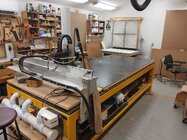
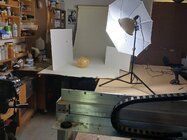
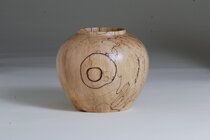
The third photo is a test shot with 105mm focal distance, auto white balance and f18 aperture. The color seems right, but I may compare it with a custom white balance and a designated color temp just for grins. The image of the vessel itself seems fairly clean. I see some wrinkles and schmutz in the flat backdrop, more shadow than I might like and a hot spot on the vessel shoulder. I could get the vertical background darker with a shade panel between it and the light. I'm sure the wrinkles could be rubbed out with editing software. I have another lightstand so could easily add another light if advisable or another diffusion panel.
What do your eyes see that mine don't, and how would you suggest changing things around?



Last edited:

